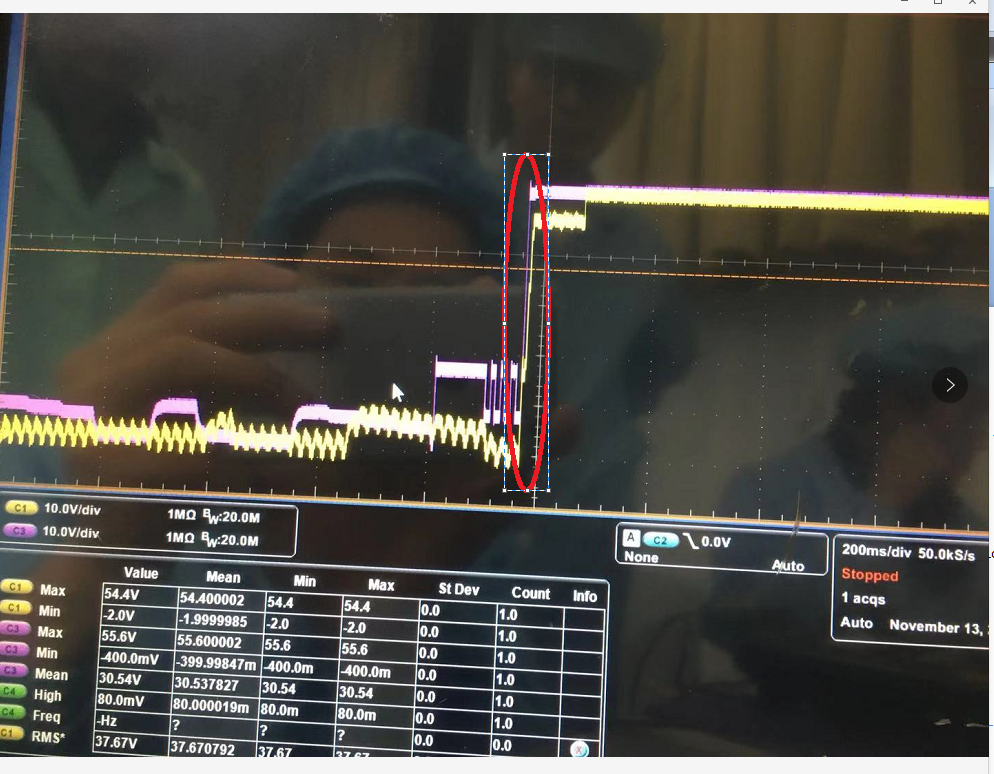Other Parts Discussed in Thread: TPS23881, TPS2378EVM-602
Hi expert,
For this data page 20, does PSE use 2 different RJ45 or 2 different channels?
We concern that the VDD of 2 PSE channels, VDD1 of TPS2372(PD1) and VDD2 of TPS2372(PD2) are connected together.
When PD1 finish the handshaking, the VDD2 of PD2 will be pulled up to 54V, it will make PD2 handshaking fail. Like the attached waveform.
Channel3 finished the handshaking and power on, at the same time Channel is pulled up to 54V.
Is my reasoning right?
UpgradingIEEE802.3atandNon-StandardHighPowerPSESystemtoIEEE802.3btCompli....pptx


